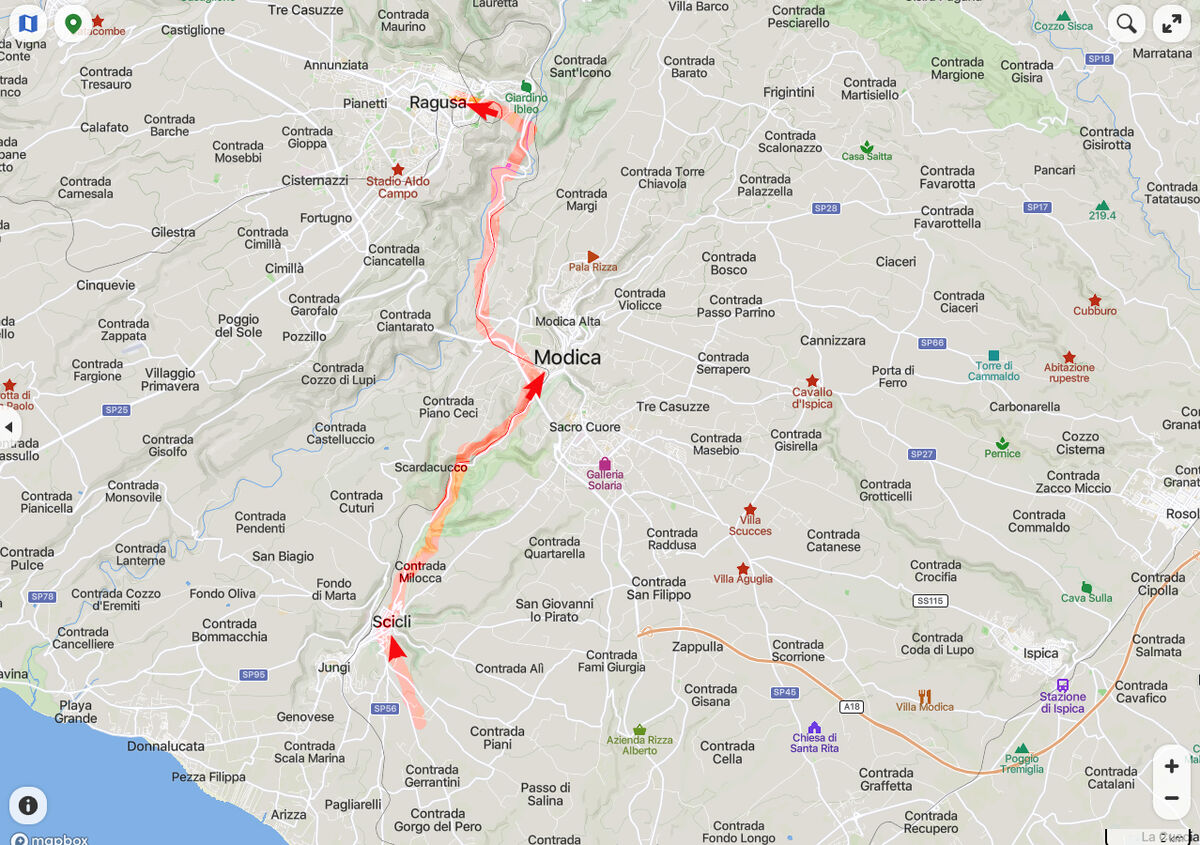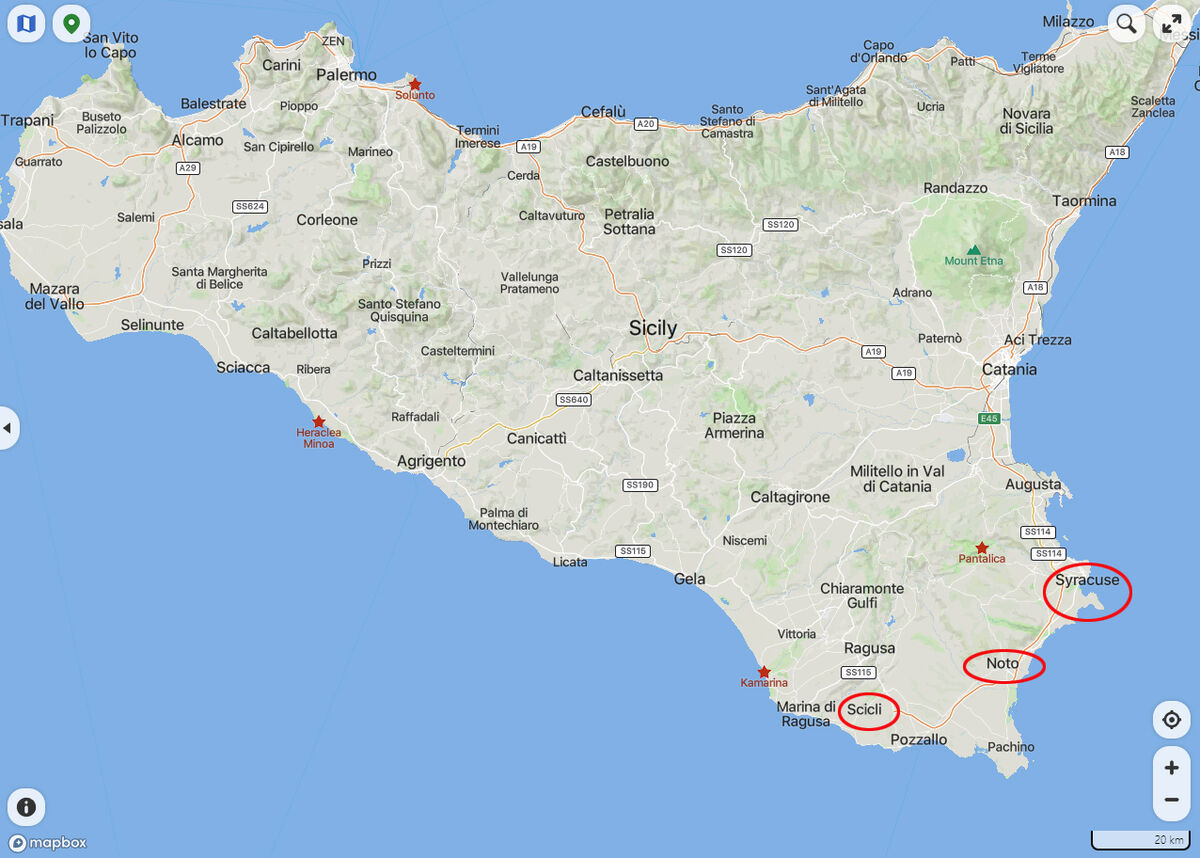Sicily: The Road To Ragusa Part 2
Apr 12, 2024 15:11:07 #
Here are some more Southern Sicilian landscapes as we headed to our next stop on the tour - Ragusa. On our way, we crossed the Viadotto Irmino and passed the city of Modica. Unfortunately, didn't have time to stop. All of these were taken through the tour bus windows with a Nikon D7500 and a Nikkor 18-300 f3.6-5.6 lens set at f11, 1/640 sec and auto ISO. Post processing done with Luminar Neo.
A little about Modica from the website: https://www.alongdustyroads.com/posts/guide-modica-sicily
"Paths veiled by an eternal stretch, arrow alleys between glimpses of historic passion; with late steps I come to my heart, an unbelievable gaze that attracts me..."
— Salvatore Quasimodo, Sicilian Poet from Modica
Forty minutes' drive from Ragusa or Noto, and nestled within a valley formed by four hills, lies the spectacular town of Modica.
One of eight UNESCO Heritage ‘Val di Noto’ towns and cities in south-eastern Sicily whose architectural landscape changed forever following the devastating earthquake of 1693, the medieval old town once carved into rock has been replaced by stunning baroque facades, extravagant churches and beautiful palaces; the old and new connected by a maze of narrow streets and staircases.
It is a town whose geography can make on-foot explorations a little more complicated than simply following a map from point A to B, but with enough time and an acceptance that a wrong turn that leads to a new viewpoint over the valley and tumbling buildings below can never really be wrong at all, Modica will capture your heart like many visitors who have gone before.
UNDERSTANDING THE GEOGRAPHY OF MODICA
It was a deep gorge between the Iblei Mountains from which the town of Modica sprung, long ago when it was not traffic that flowed down Corso Umberto but the two rivers, Ianni Mauro and Pozzo dei Prun.
A flood-prone valley meant that early settlers had little choice but to seek shelter in hill top caves, and the town was originally carved into stone; a warren of winding alleys and grey rock that became known as Modica Alta - or Upper Modica.
As the town grew, the decision was taken to cover the problematic rivers, and the newer Modica Bassa (Lower Modica) was born, tumbling down the steep slopes and into the valley below.
Whilst those sat at the highest heights no longer require access to the water and the rivers below, many of the old staircases built solely for this purpose still exist today, forever connecting the ‘two cities’ and offering a chance for visitors to enjoy spectacular views on the way up or down.
With that said however, we do appreciate that the steep climb up to Modica Alta will be pretty challenging for many people - in the high heat, even we struggled!
From Wikipedia: https://en.wikipedia.org/wiki/Modica
HISTORY:
According to Thucydides, the city was founded in 1360 BC or 1031 BC and was inhabited by the Sicels in the 7th century BC. It was probably a dependency of Syracuse. Modica was occupied by the Romans after the battle of the Egadi islands against the Carthaginians in the Punic Wars 241 BC, together with Syracuse and all of Sicily. Modica became one of the thirty-five decuman ("spontaneously submitted") cities of the island and was oppressed by the praetor Verres. It became an independent municipium, and apparently a place of some consequence. The city is also mentioned among the inland towns of the island both by Pliny and Ptolemy; and though its name is not found in the Itineraries, it is again mentioned by the Geographer of Ravenna. Silius Italicus also includes it in his list of Sicilian cities, and immediately associates it with Netum (now Noto Antica), with which it was clearly in the same neighborhood. The southeast of Sicily and Modica (according to the German historian L. Hertling) was rapidly Christianized, as the diocese of Syracuse boasts an apostolic foundation by St. Paul in 61 AD. In 535, the Byzantine general Belisarius expelled the Ostrogoths and established for Justinian I the government of the East-Roman Empire (also known as the Byzantine Empire) and the already Greek-speaking population fixed their culture until the Latinization of the Normans in the 11th century.
In 845, Modica was captured by the Arabs during the Muslim conquest of Sicily. They referred to the city as Mudiqah. The year after its capture, the Arabs fortified its citadels and it subsequently prospered under their rule. In 1091 the conquest of Modica and the entire Val di Noto ended the long lasting war of the Normans, led by Roger of Hauteville, against the Arabs.
In 1296, Modica became the capital of an important county, which under the Chiaramonte family became a flourishing semi-independent state controlling the whole southern third of the island, with the right of a mint of its own and other privileges.
On Assumption day 15 August 1474, Christians wreaked brutal havoc on the Jewish dwellers of the Cartellone area of Modica, the so-called "Strage dell'Assunta" (massacre of the assumption). This episode was the first and most horrible antisemitic massacre of Sicilian Israelites. During the evening a number of Christians (fomented by fanatic Catholic preachers inspired by the inquisitorial repression) slaughtered about 360 innocents causing a total and fierce devastation in La Giudecca. The incitement that echoed through the streets was: "Hurrah for Mary! Death to the Jews!" (Viva Maria! Morte ai Giudei!).
Later, the earthquake of 1693 destroyed the entire Val di Noto, and to a slightly lesser extent in Modica. Annexed to Italy in 1860, Modica remained district capital until 1926, when it was included in the province of Ragusa.
For more images of Southern Sicily, please see my previous posts:
https://www.uglyhedgehog.com/t-803560-1.html#14542465
https://www.uglyhedgehog.com/t-803628-1.html#14544157
https://www.uglyhedgehog.com/t-803797-1.html#14548404
https://www.uglyhedgehog.com/t-803957-1.html#14552084
https://www.uglyhedgehog.com/t-804244-1.html
https://www.uglyhedgehog.com/t-804445-1.html#14560759
I hope you enjoy these!
Mark
A little about Modica from the website: https://www.alongdustyroads.com/posts/guide-modica-sicily
"Paths veiled by an eternal stretch, arrow alleys between glimpses of historic passion; with late steps I come to my heart, an unbelievable gaze that attracts me..."
— Salvatore Quasimodo, Sicilian Poet from Modica
Forty minutes' drive from Ragusa or Noto, and nestled within a valley formed by four hills, lies the spectacular town of Modica.
One of eight UNESCO Heritage ‘Val di Noto’ towns and cities in south-eastern Sicily whose architectural landscape changed forever following the devastating earthquake of 1693, the medieval old town once carved into rock has been replaced by stunning baroque facades, extravagant churches and beautiful palaces; the old and new connected by a maze of narrow streets and staircases.
It is a town whose geography can make on-foot explorations a little more complicated than simply following a map from point A to B, but with enough time and an acceptance that a wrong turn that leads to a new viewpoint over the valley and tumbling buildings below can never really be wrong at all, Modica will capture your heart like many visitors who have gone before.
UNDERSTANDING THE GEOGRAPHY OF MODICA
It was a deep gorge between the Iblei Mountains from which the town of Modica sprung, long ago when it was not traffic that flowed down Corso Umberto but the two rivers, Ianni Mauro and Pozzo dei Prun.
A flood-prone valley meant that early settlers had little choice but to seek shelter in hill top caves, and the town was originally carved into stone; a warren of winding alleys and grey rock that became known as Modica Alta - or Upper Modica.
As the town grew, the decision was taken to cover the problematic rivers, and the newer Modica Bassa (Lower Modica) was born, tumbling down the steep slopes and into the valley below.
Whilst those sat at the highest heights no longer require access to the water and the rivers below, many of the old staircases built solely for this purpose still exist today, forever connecting the ‘two cities’ and offering a chance for visitors to enjoy spectacular views on the way up or down.
With that said however, we do appreciate that the steep climb up to Modica Alta will be pretty challenging for many people - in the high heat, even we struggled!
From Wikipedia: https://en.wikipedia.org/wiki/Modica
HISTORY:
According to Thucydides, the city was founded in 1360 BC or 1031 BC and was inhabited by the Sicels in the 7th century BC. It was probably a dependency of Syracuse. Modica was occupied by the Romans after the battle of the Egadi islands against the Carthaginians in the Punic Wars 241 BC, together with Syracuse and all of Sicily. Modica became one of the thirty-five decuman ("spontaneously submitted") cities of the island and was oppressed by the praetor Verres. It became an independent municipium, and apparently a place of some consequence. The city is also mentioned among the inland towns of the island both by Pliny and Ptolemy; and though its name is not found in the Itineraries, it is again mentioned by the Geographer of Ravenna. Silius Italicus also includes it in his list of Sicilian cities, and immediately associates it with Netum (now Noto Antica), with which it was clearly in the same neighborhood. The southeast of Sicily and Modica (according to the German historian L. Hertling) was rapidly Christianized, as the diocese of Syracuse boasts an apostolic foundation by St. Paul in 61 AD. In 535, the Byzantine general Belisarius expelled the Ostrogoths and established for Justinian I the government of the East-Roman Empire (also known as the Byzantine Empire) and the already Greek-speaking population fixed their culture until the Latinization of the Normans in the 11th century.
In 845, Modica was captured by the Arabs during the Muslim conquest of Sicily. They referred to the city as Mudiqah. The year after its capture, the Arabs fortified its citadels and it subsequently prospered under their rule. In 1091 the conquest of Modica and the entire Val di Noto ended the long lasting war of the Normans, led by Roger of Hauteville, against the Arabs.
In 1296, Modica became the capital of an important county, which under the Chiaramonte family became a flourishing semi-independent state controlling the whole southern third of the island, with the right of a mint of its own and other privileges.
On Assumption day 15 August 1474, Christians wreaked brutal havoc on the Jewish dwellers of the Cartellone area of Modica, the so-called "Strage dell'Assunta" (massacre of the assumption). This episode was the first and most horrible antisemitic massacre of Sicilian Israelites. During the evening a number of Christians (fomented by fanatic Catholic preachers inspired by the inquisitorial repression) slaughtered about 360 innocents causing a total and fierce devastation in La Giudecca. The incitement that echoed through the streets was: "Hurrah for Mary! Death to the Jews!" (Viva Maria! Morte ai Giudei!).
Later, the earthquake of 1693 destroyed the entire Val di Noto, and to a slightly lesser extent in Modica. Annexed to Italy in 1860, Modica remained district capital until 1926, when it was included in the province of Ragusa.
For more images of Southern Sicily, please see my previous posts:
https://www.uglyhedgehog.com/t-803560-1.html#14542465
https://www.uglyhedgehog.com/t-803628-1.html#14544157
https://www.uglyhedgehog.com/t-803797-1.html#14548404
https://www.uglyhedgehog.com/t-803957-1.html#14552084
https://www.uglyhedgehog.com/t-804244-1.html
https://www.uglyhedgehog.com/t-804445-1.html#14560759
I hope you enjoy these!
Mark
Modica
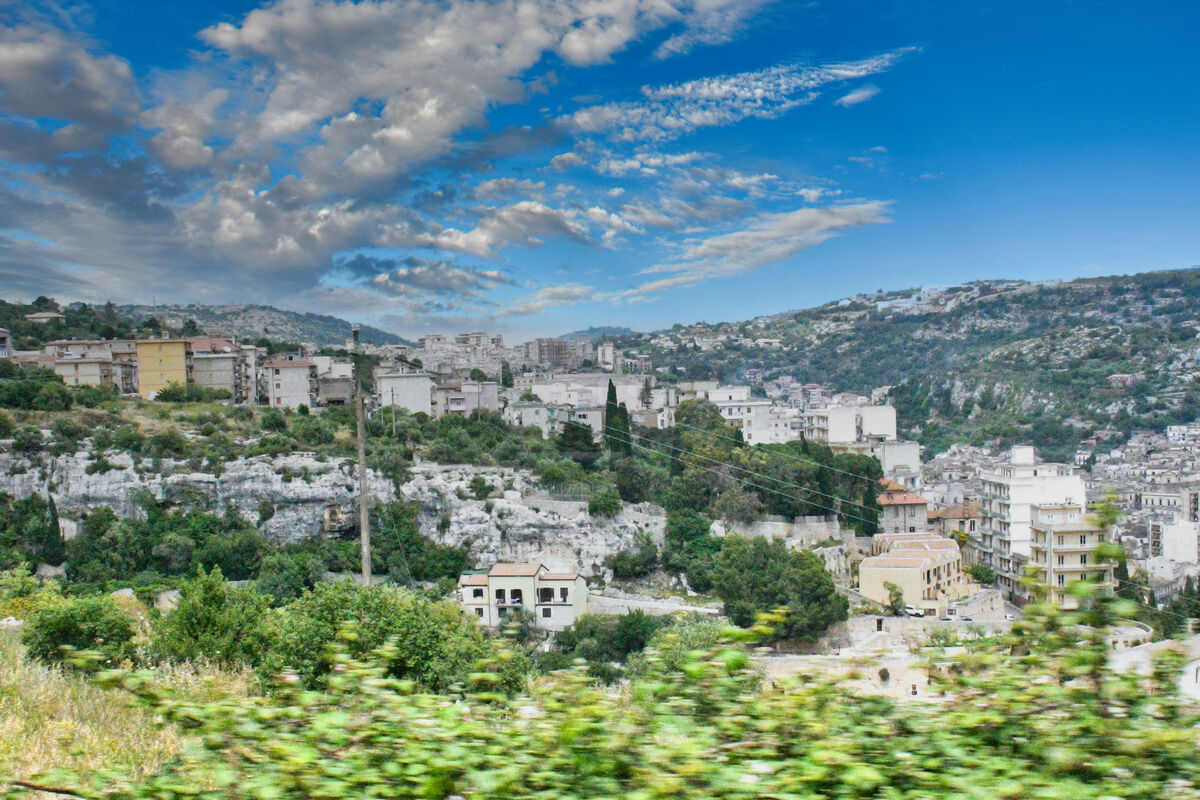
(Download)
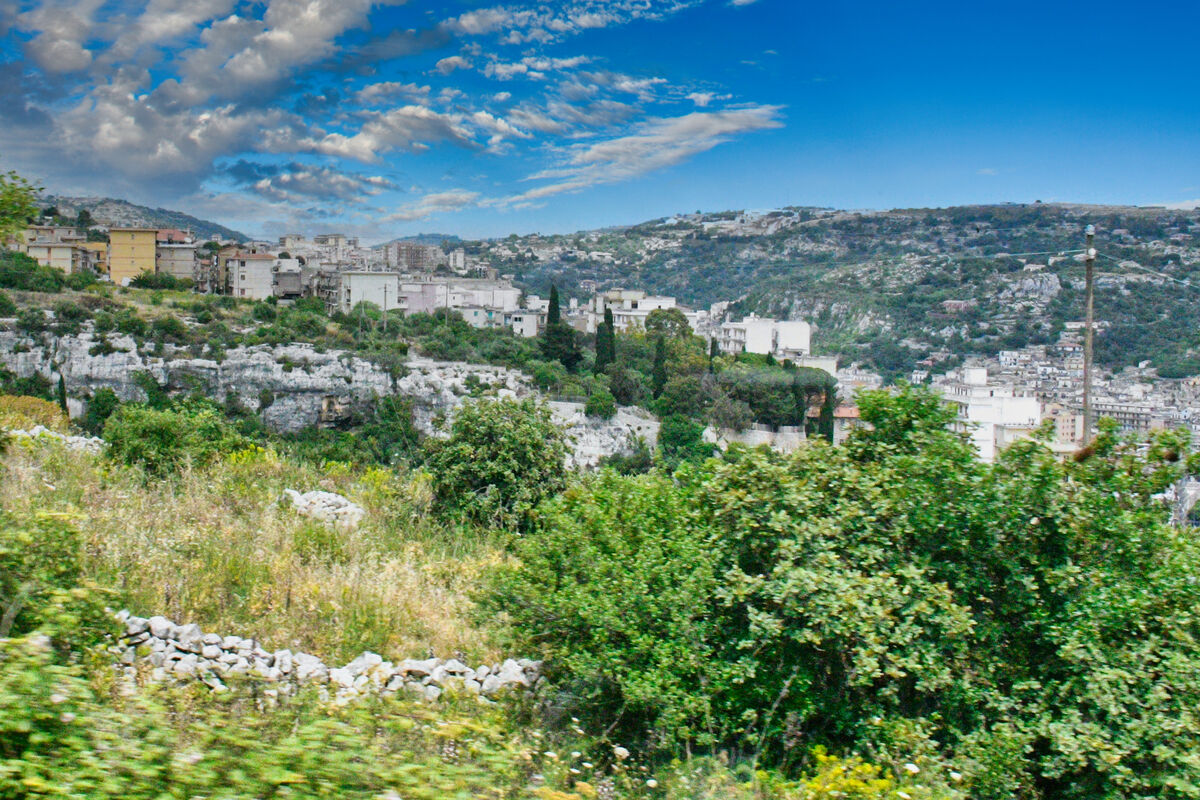
(Download)
The highest bridge on the Island of Sicily, the Viadotto Irminio is one of two towering viaducts near the Italian city of Modica on the island’s southern coast It was designed by famous bridge engineer Ricardo Morandi,
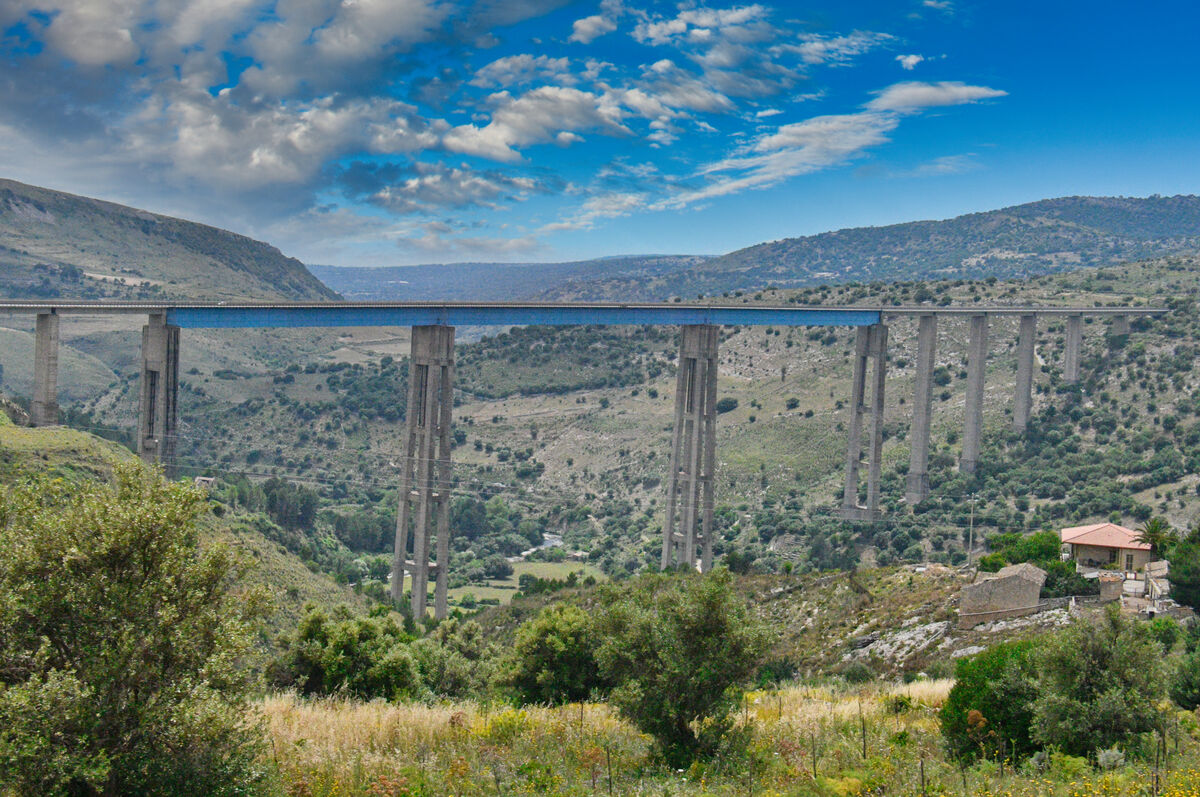
(Download)
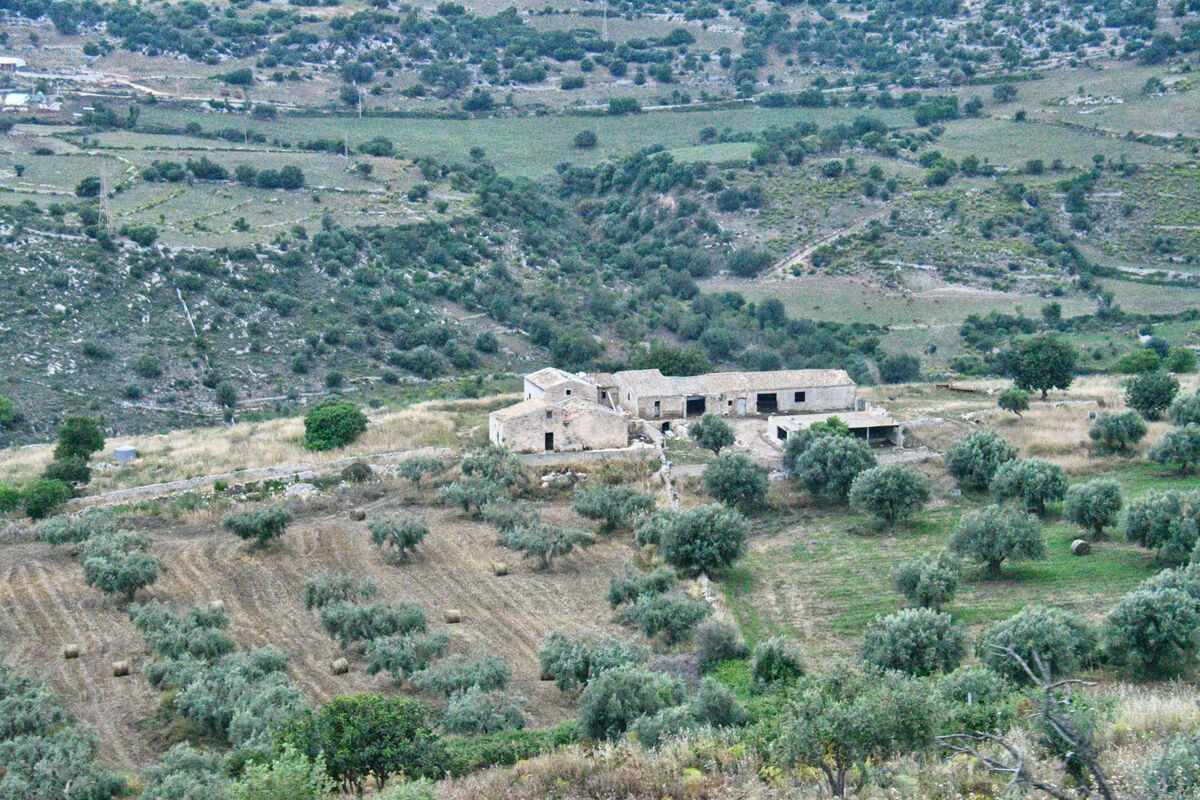
(Download)
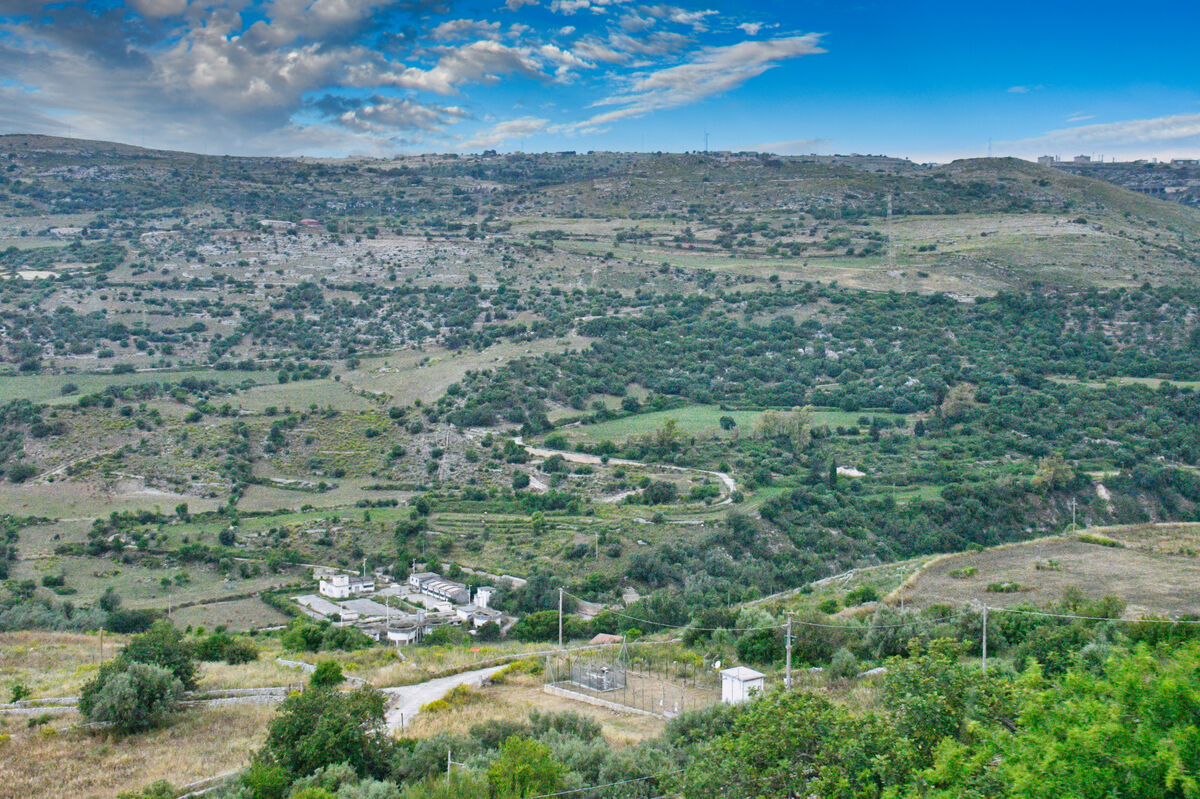
(Download)
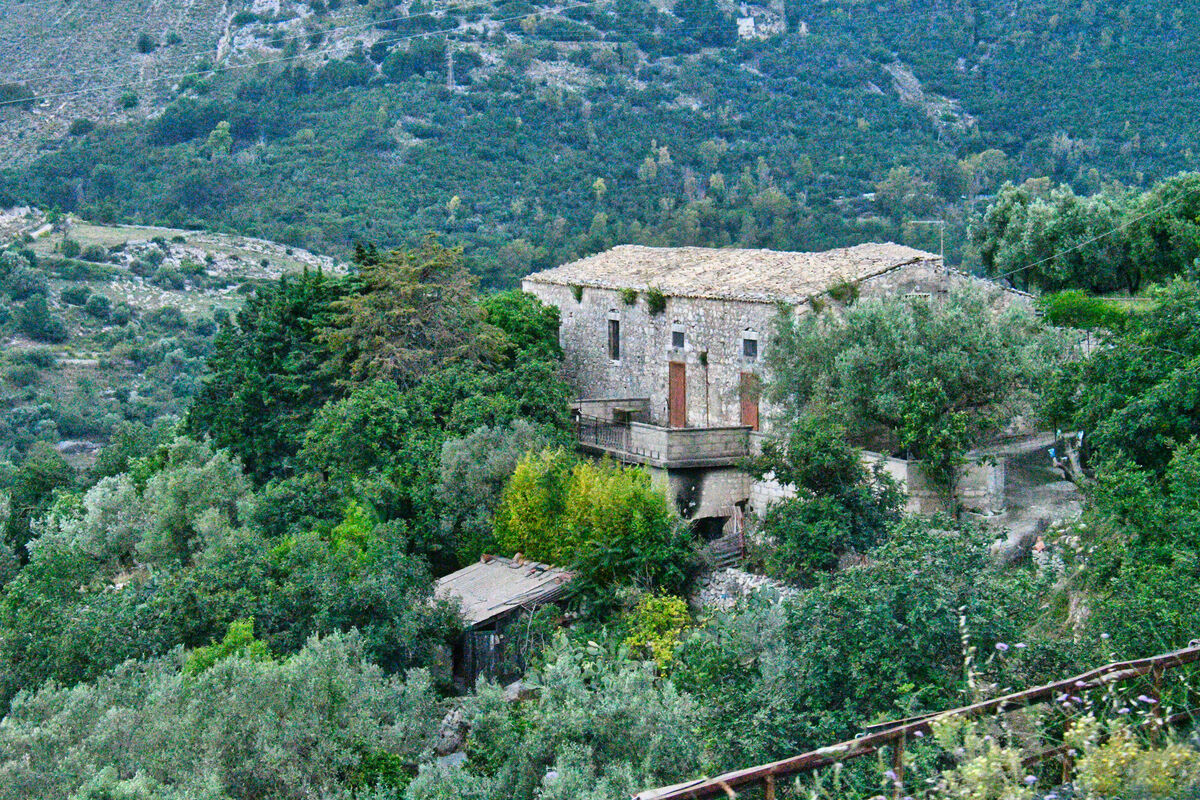
(Download)
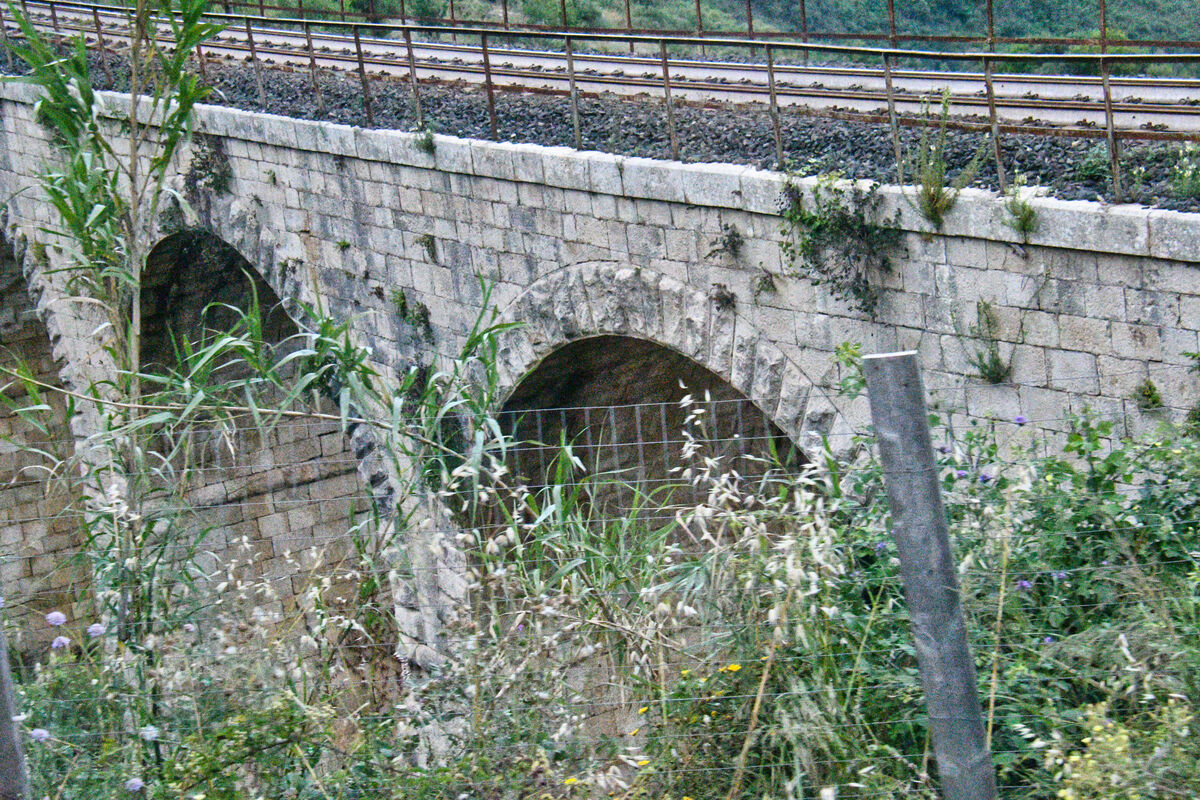
(Download)
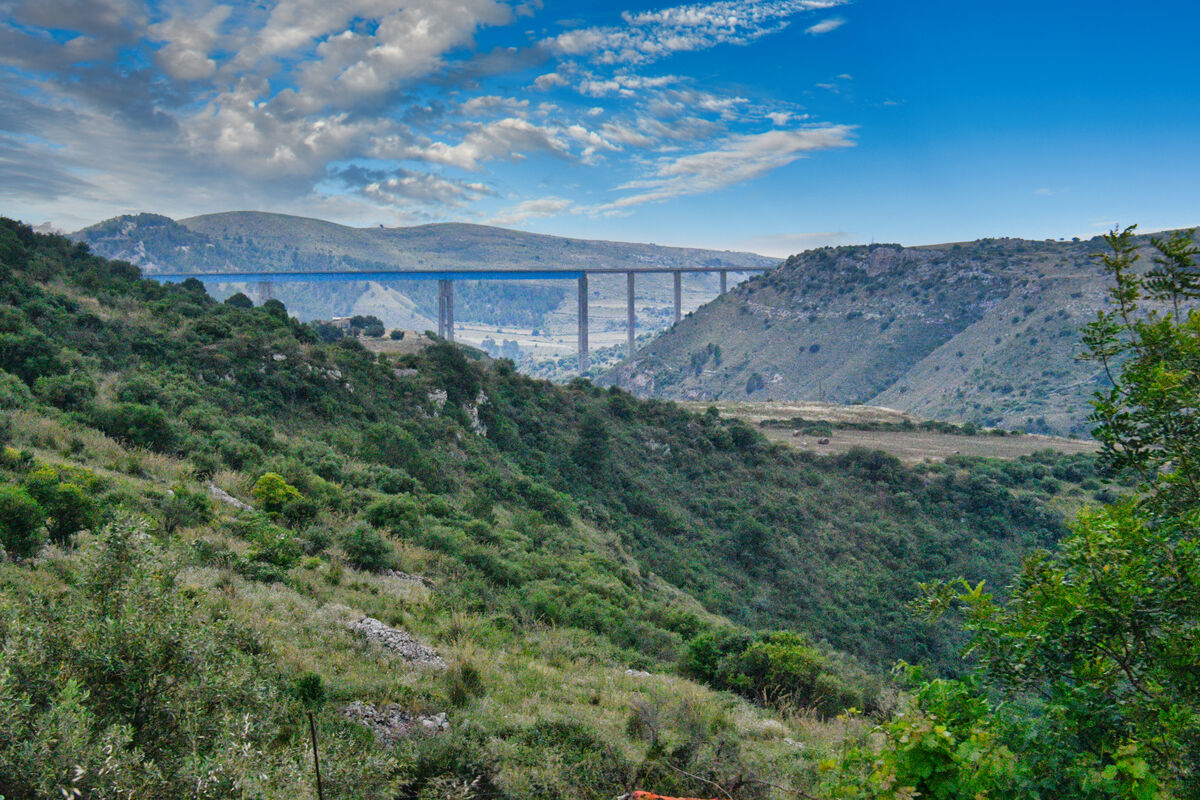
(Download)
Interesting clouds
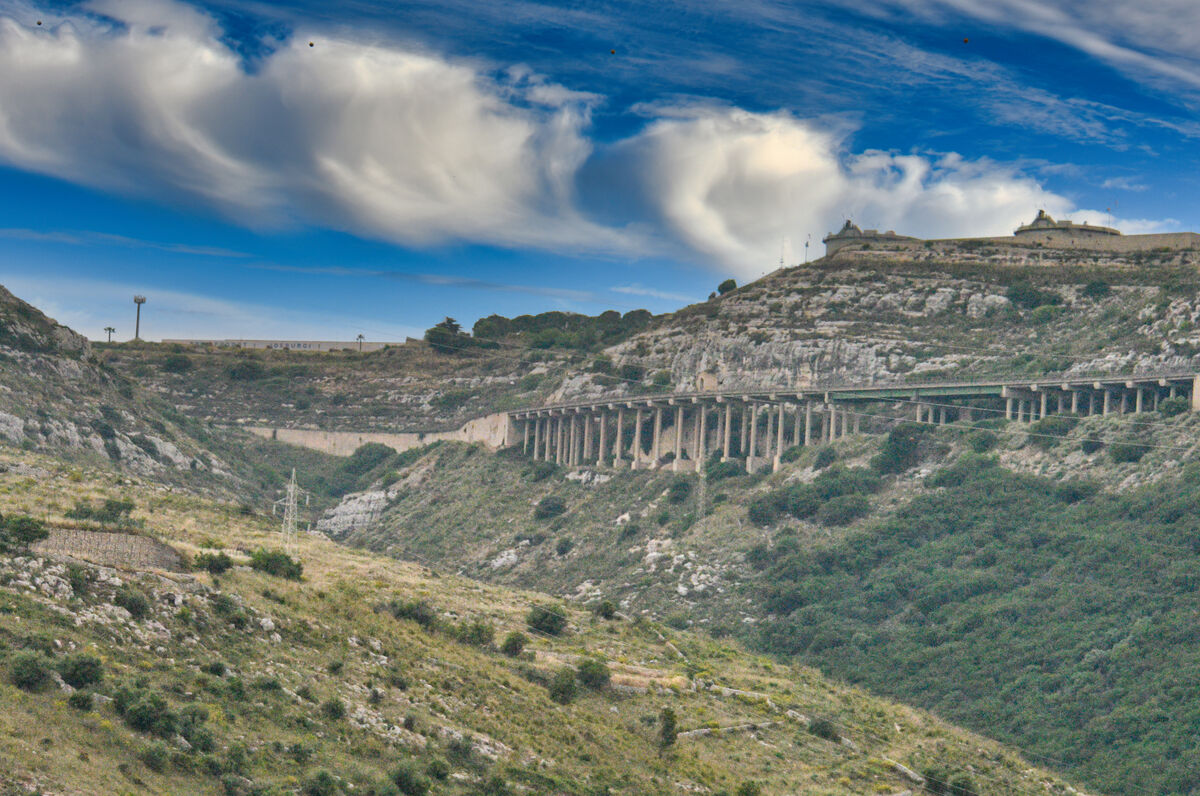
(Download)
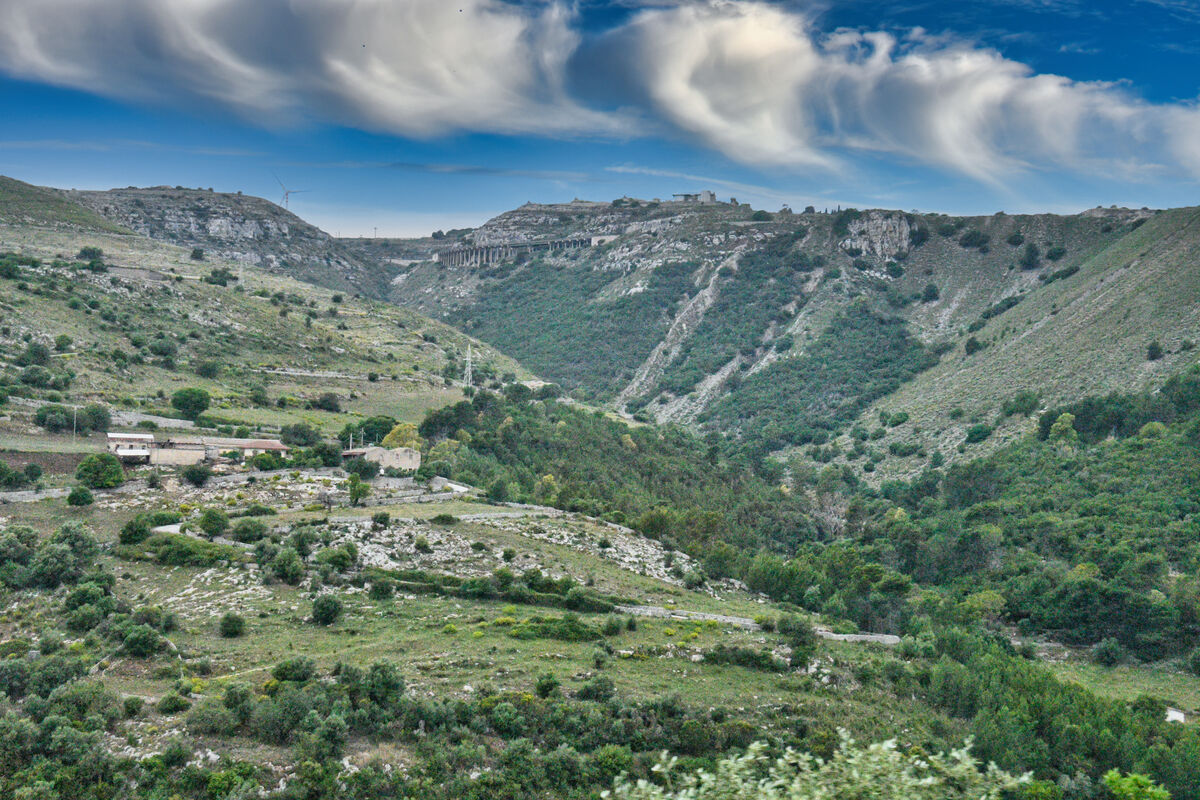
(Download)
Apr 12, 2024 15:12:28 #
Apr 12, 2024 15:24:32 #
srfmhg wrote:
Location Map:
Another excellent set Mark. It looks like a very scenic and enjoyable ride.
Apr 12, 2024 15:30:37 #
Apr 12, 2024 15:54:51 #
Apr 12, 2024 19:12:18 #
DJphoto wrote:
Another excellent set Mark. It looks like a very scenic and enjoyable ride.
That it was Dennis. Thanks very much.
Apr 12, 2024 19:12:34 #
Apr 12, 2024 19:12:56 #
Apr 12, 2024 19:48:39 #
Apr 12, 2024 19:55:19 #
UTMike wrote:
You do a great road trip, Mark.
Thanks very much Mike. Interesting scenery, not unlike California.
Apr 12, 2024 21:38:43 #
Apr 12, 2024 22:32:06 #
kpmac wrote:
Beautiful scenics, Mark. Great set.
Thanks very much Ken. Hard to get a bad landscape there.
Apr 13, 2024 05:29:52 #
Apr 13, 2024 07:29:38 #
Apr 13, 2024 09:36:25 #
If you want to reply, then register here. Registration is free and your account is created instantly, so you can post right away.

